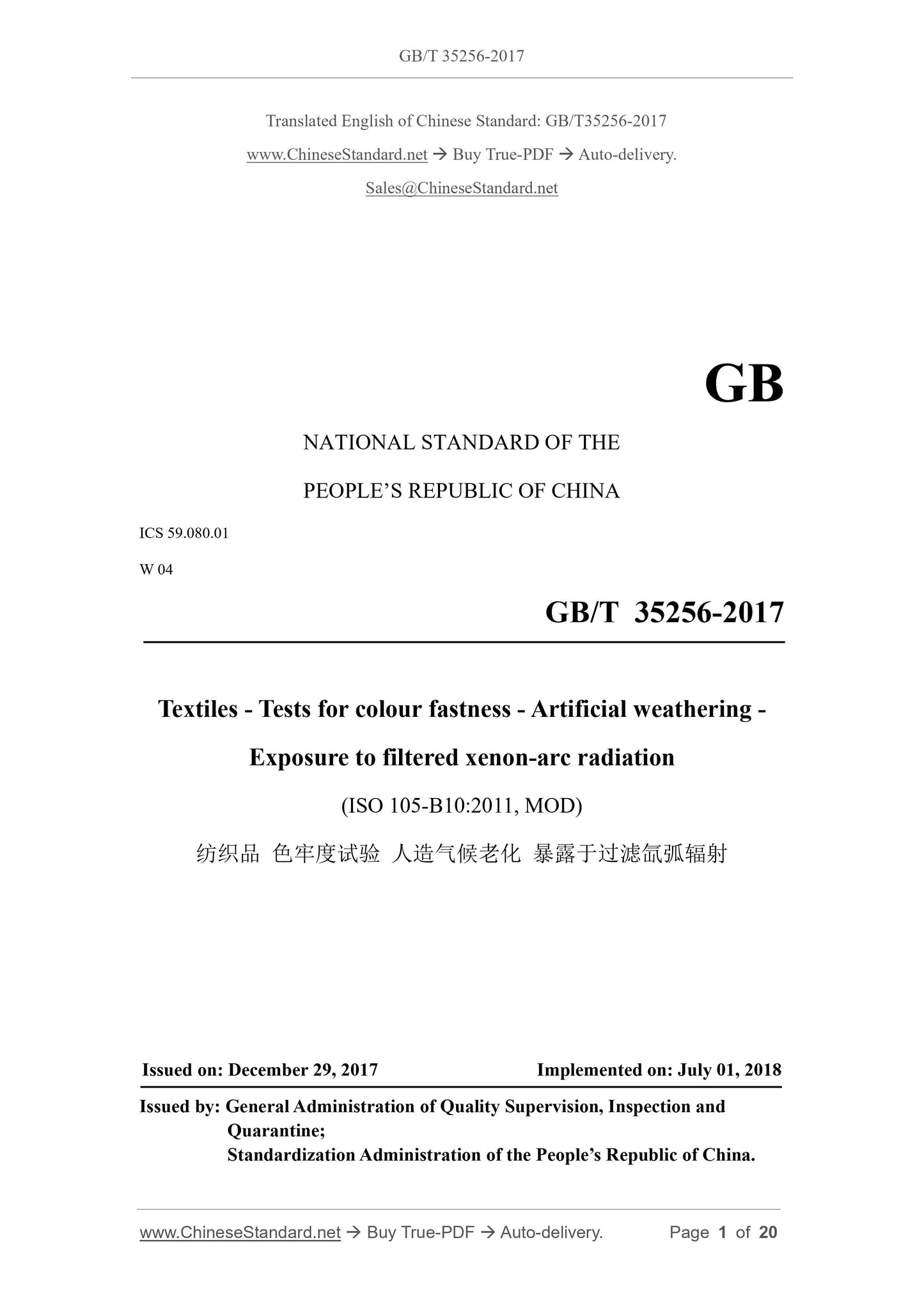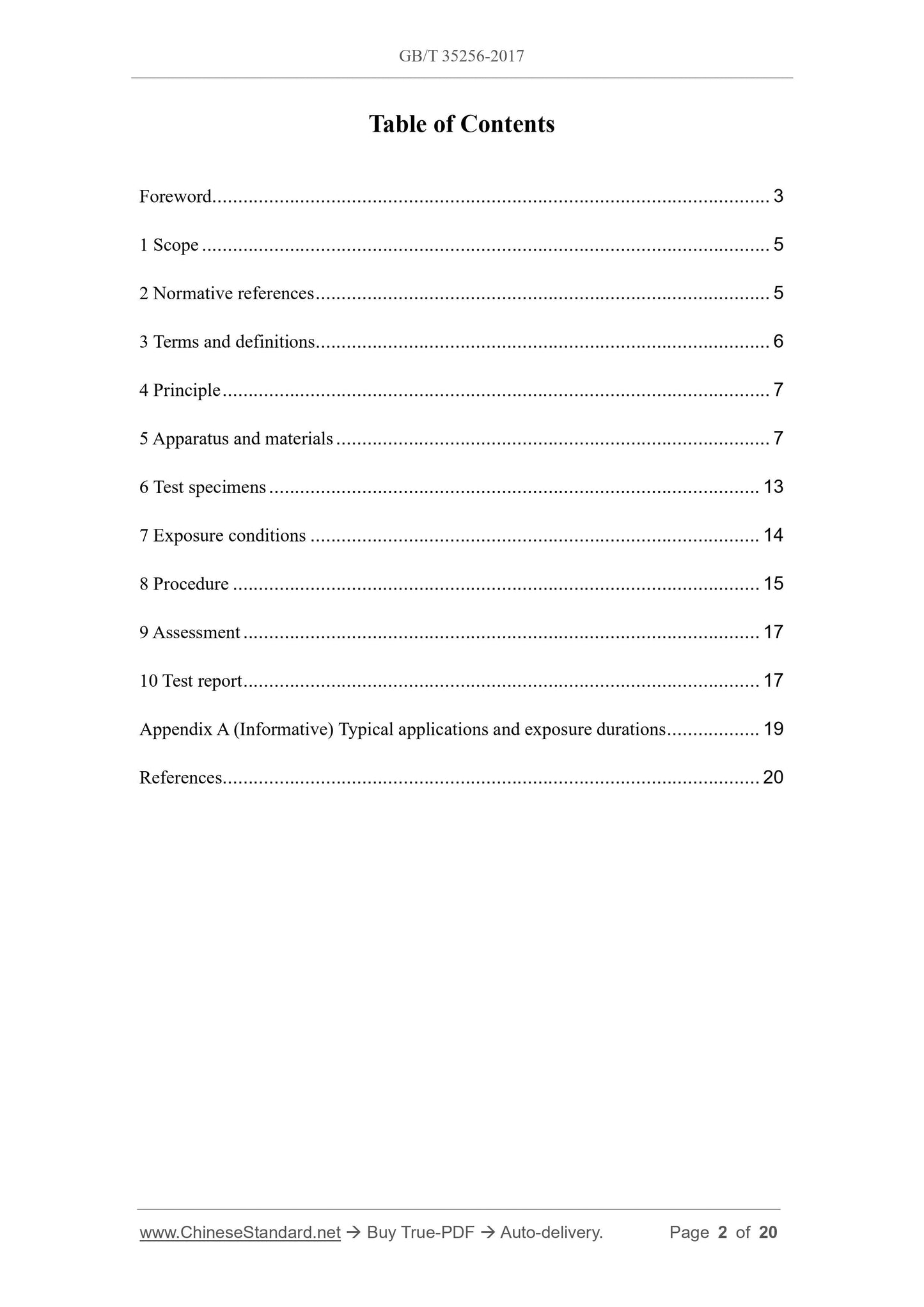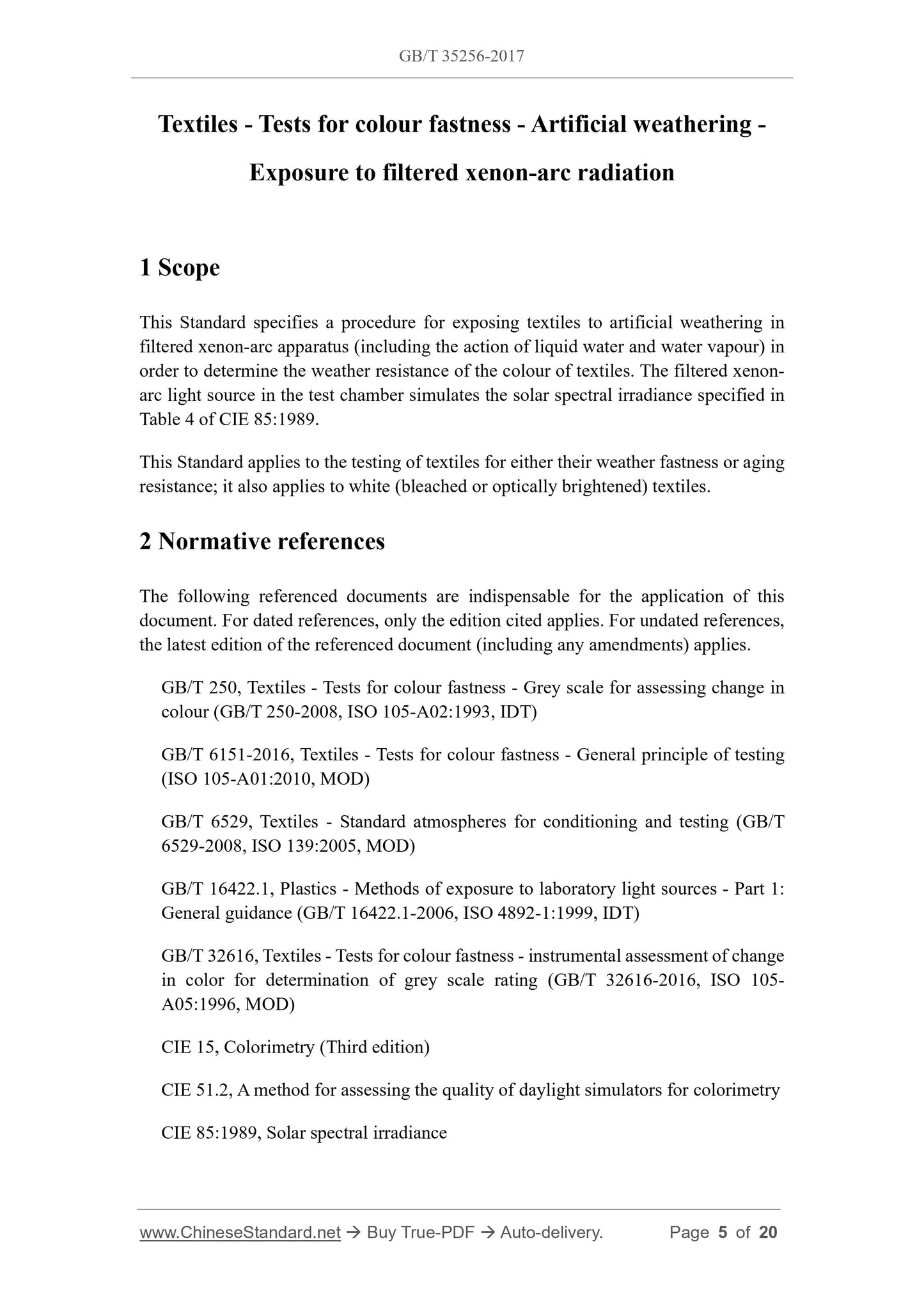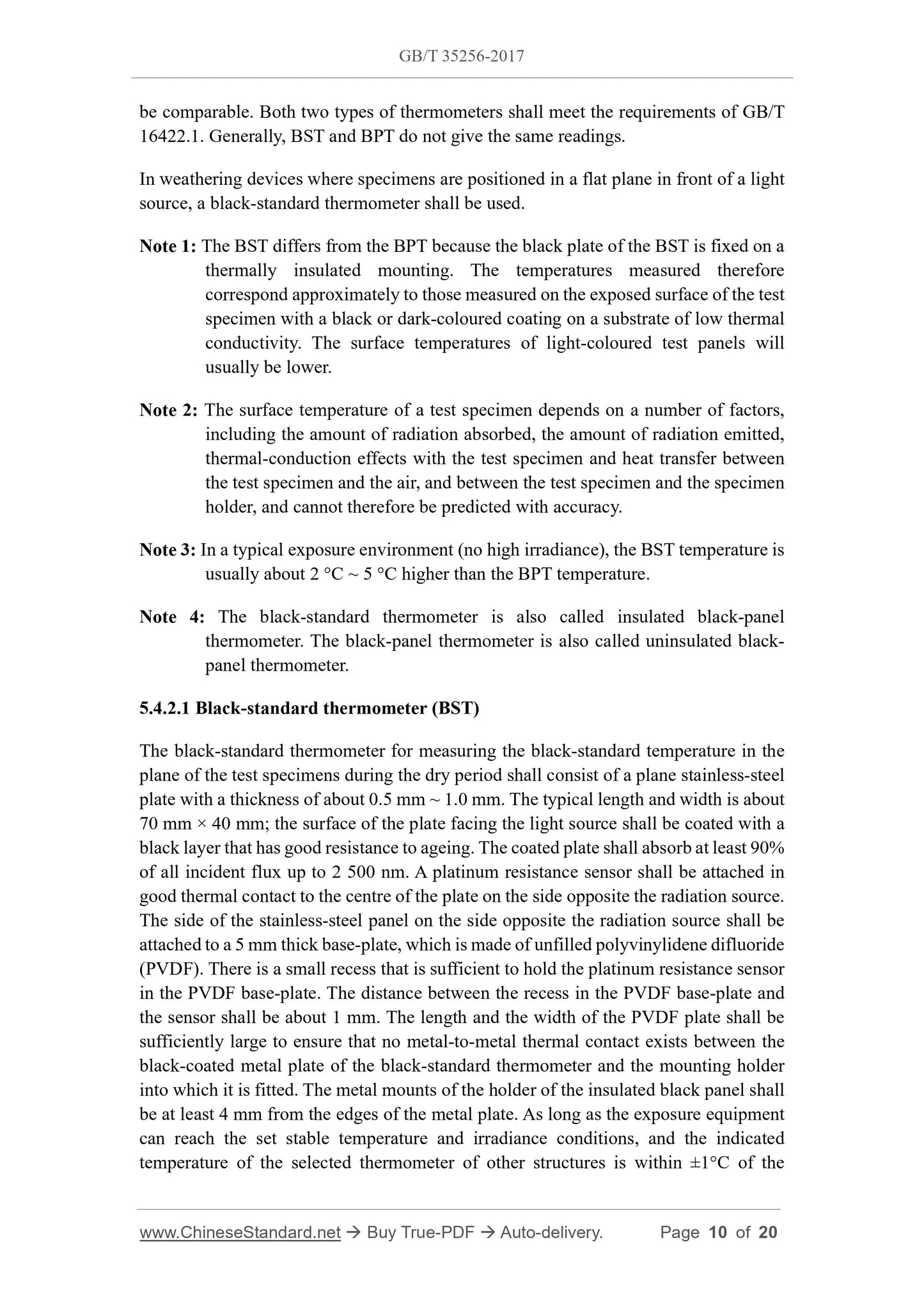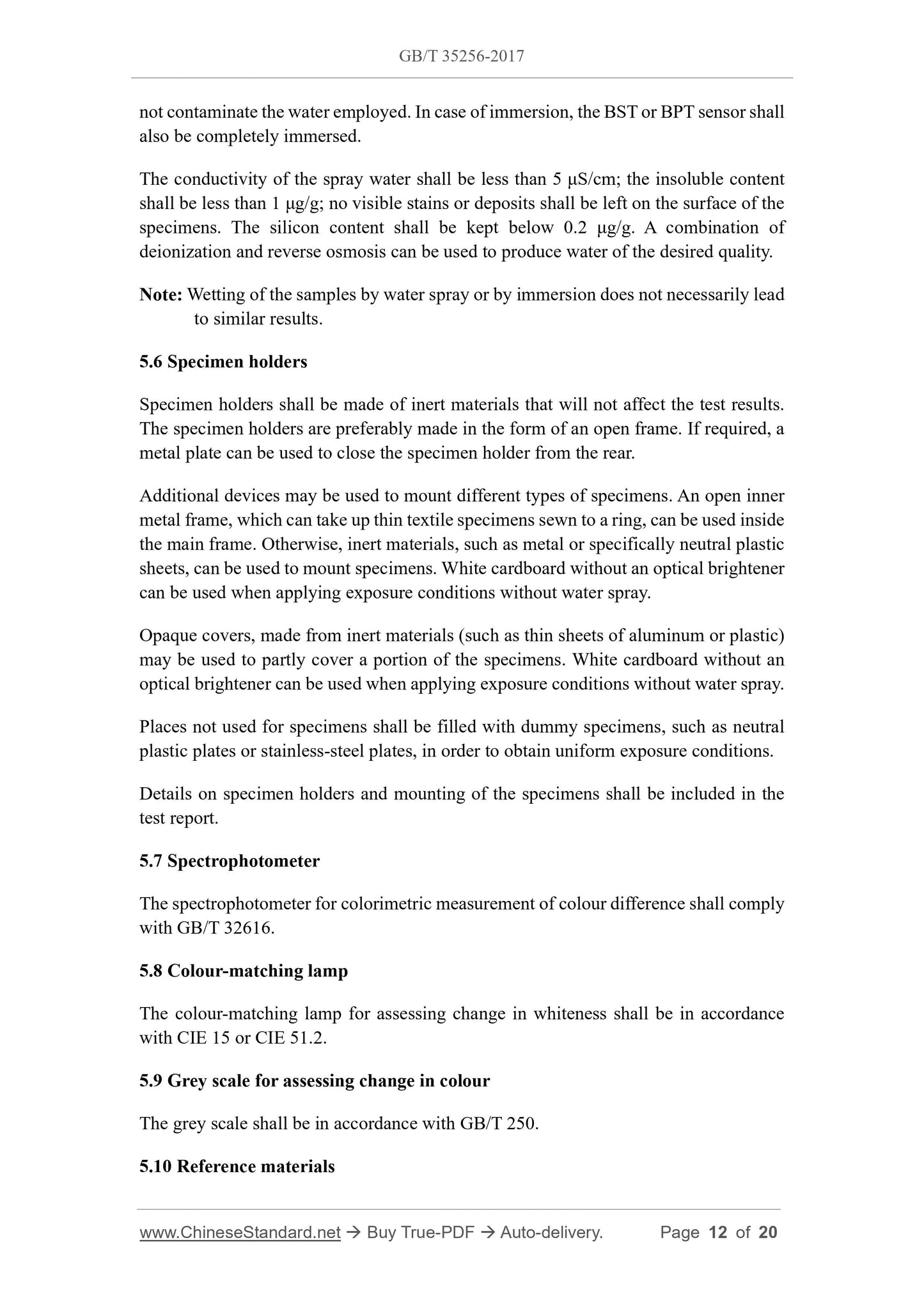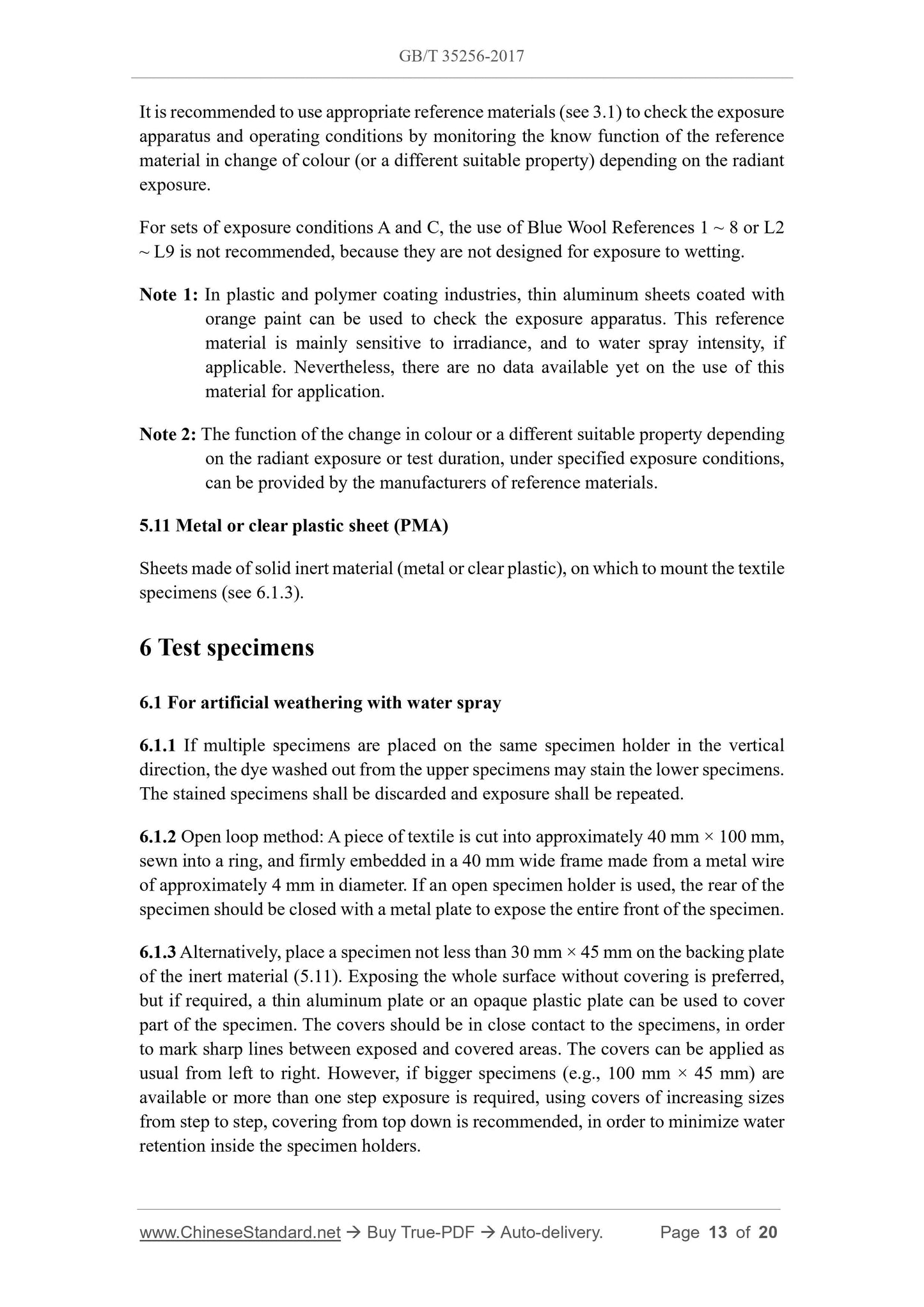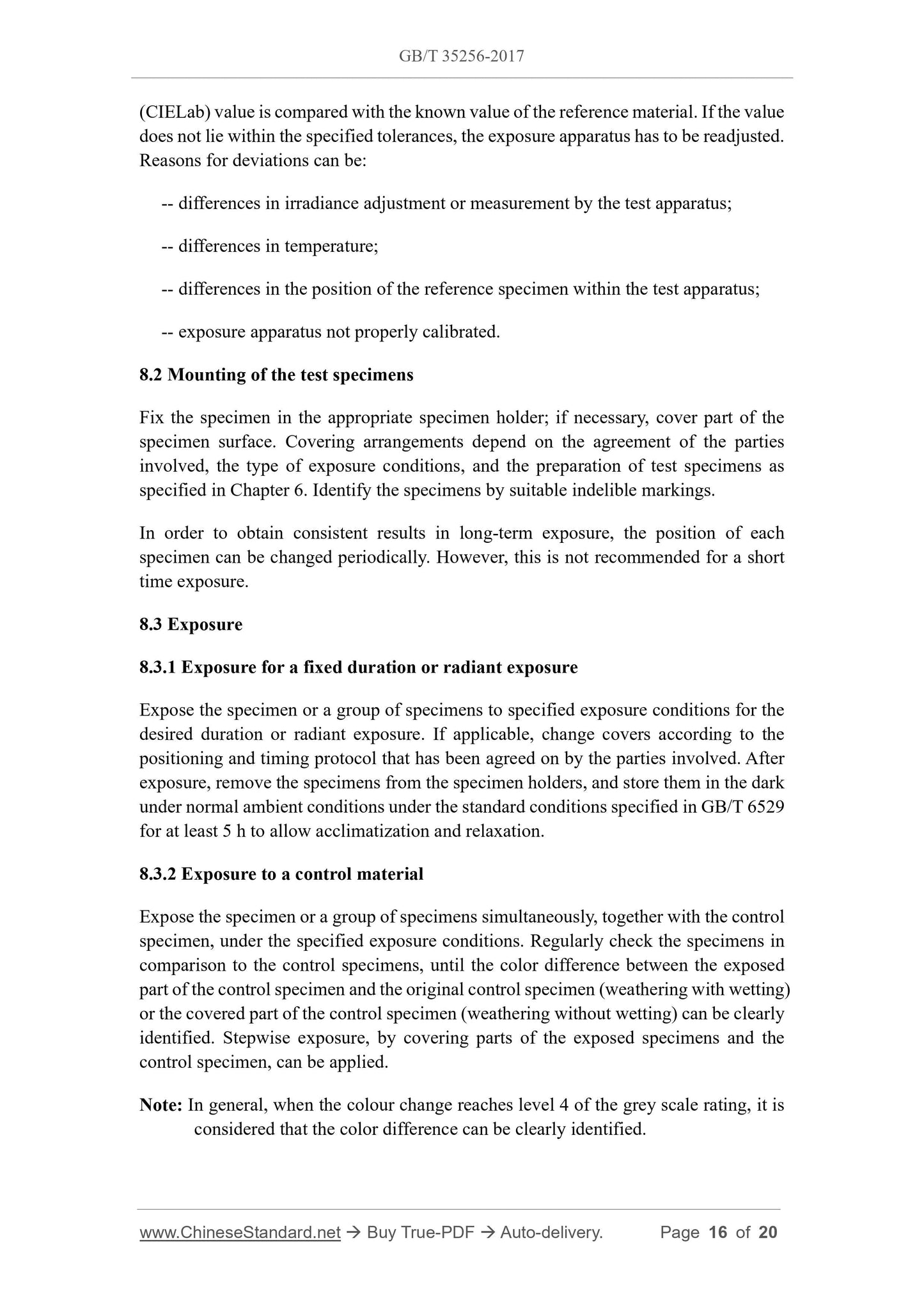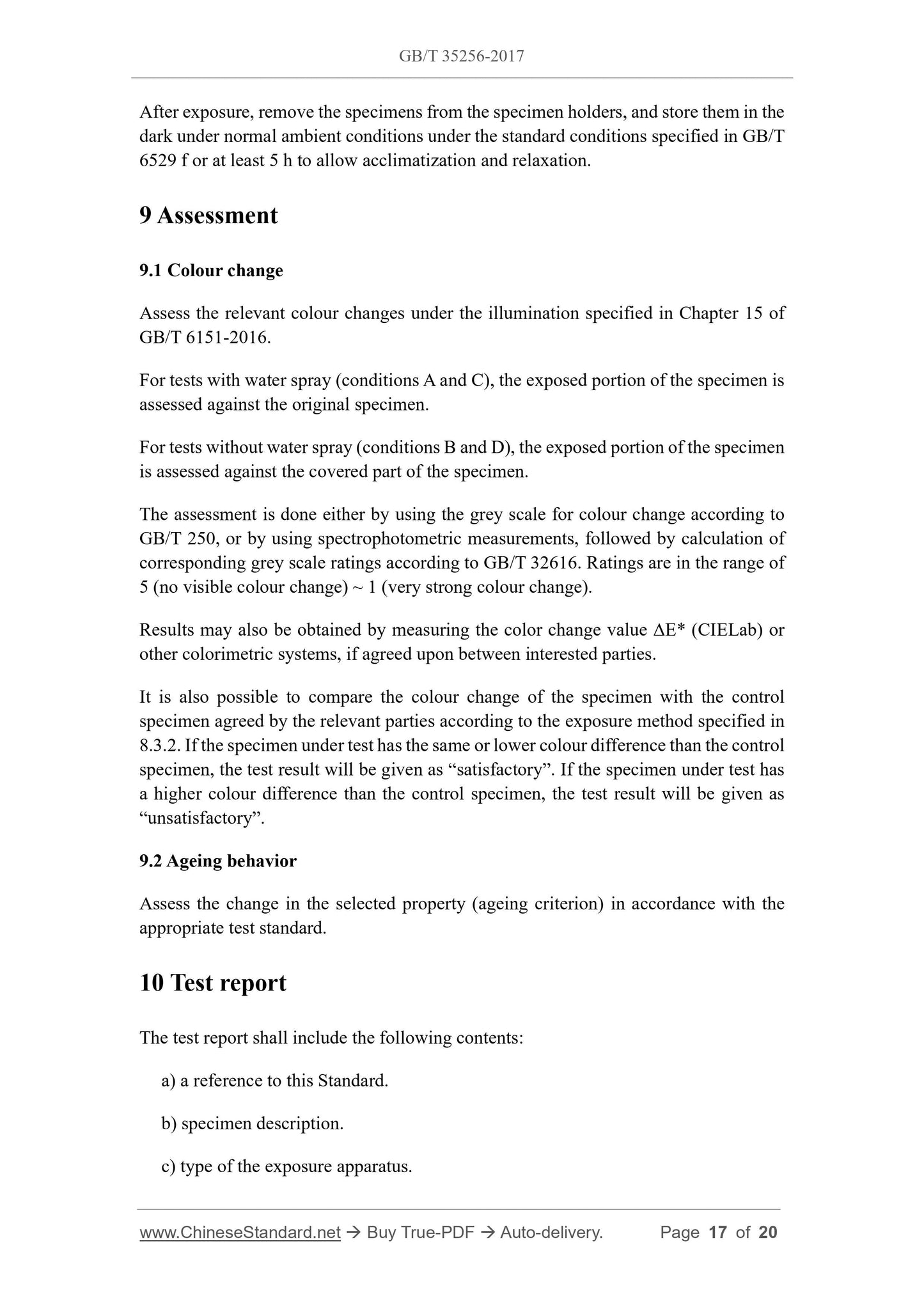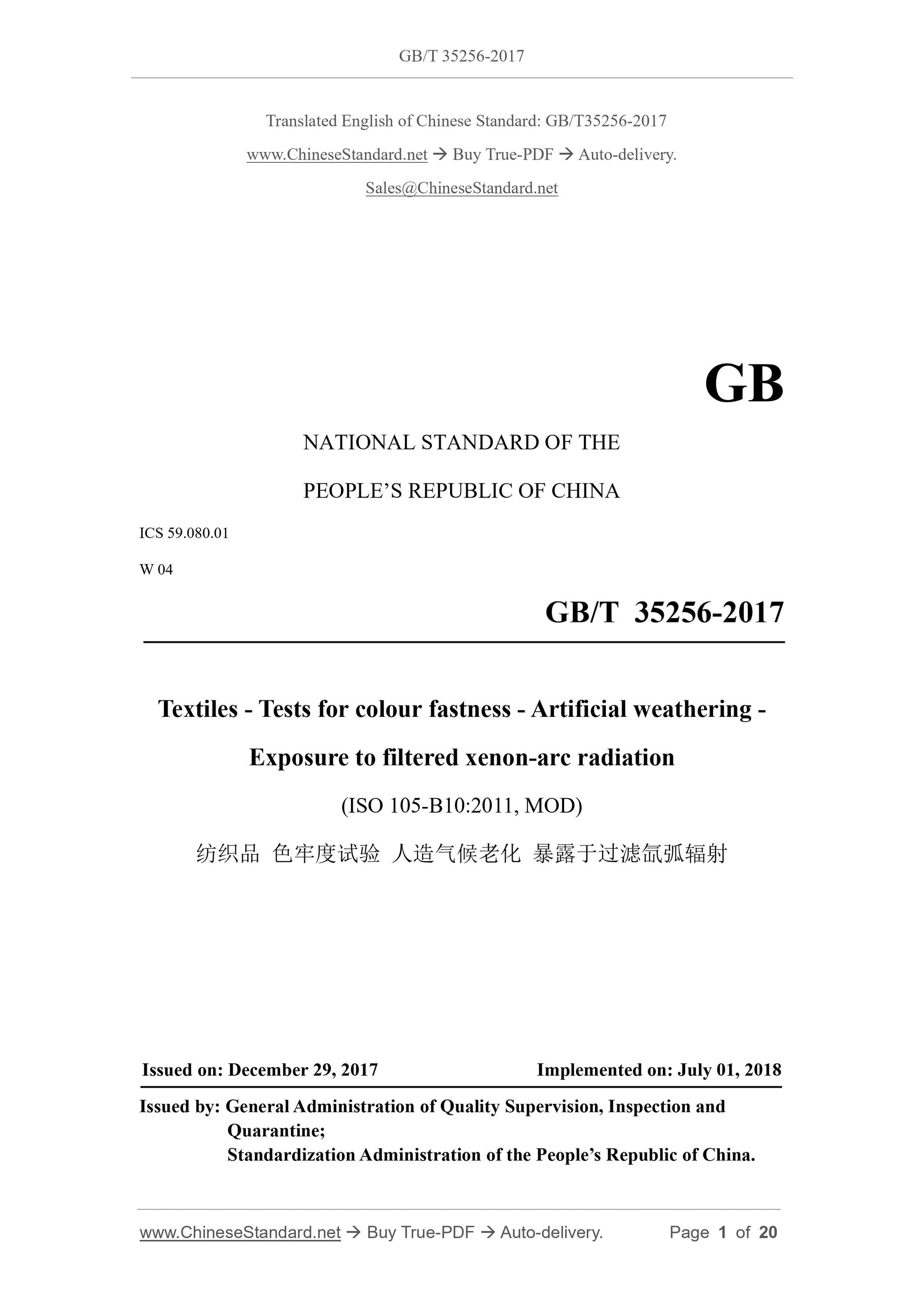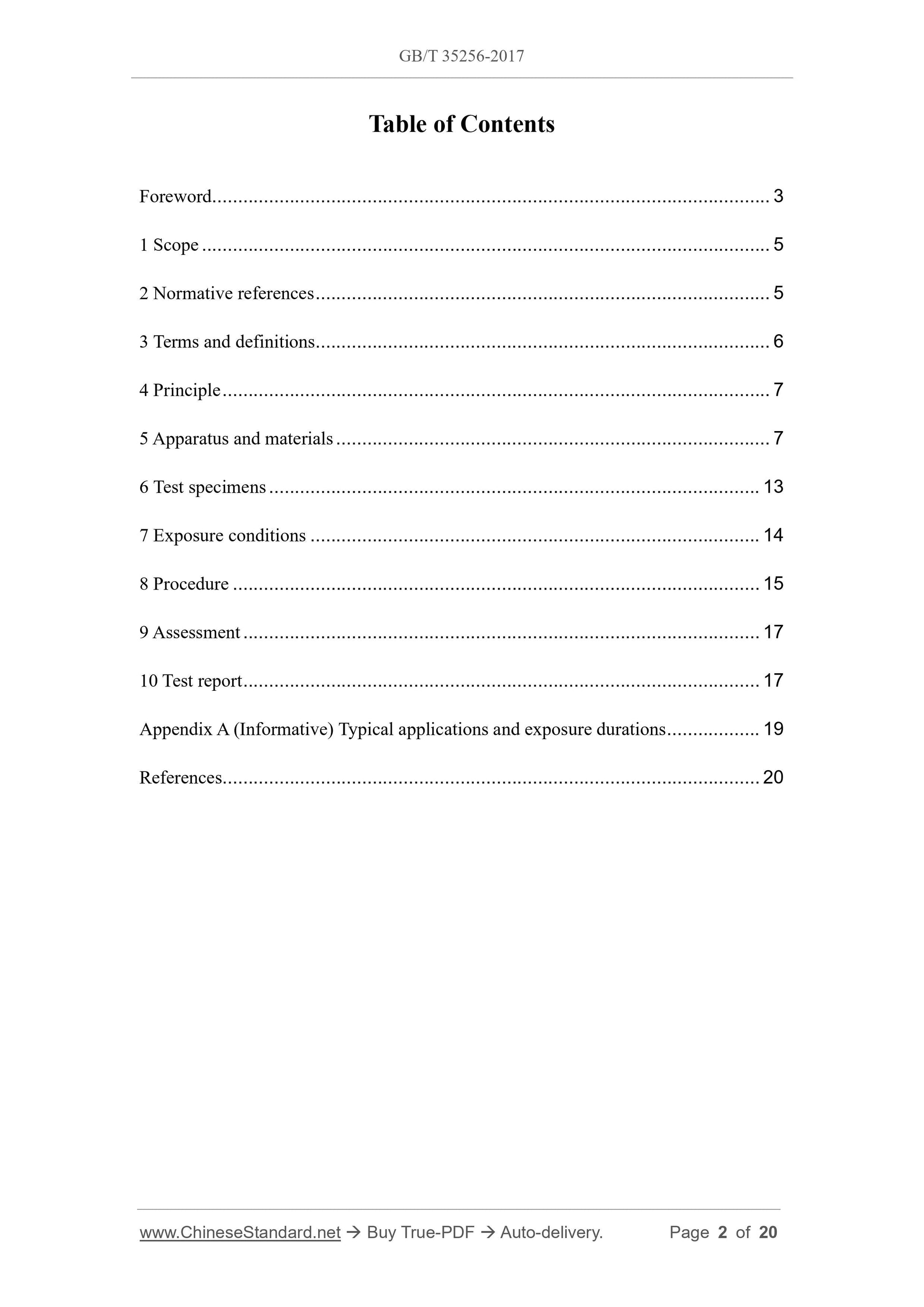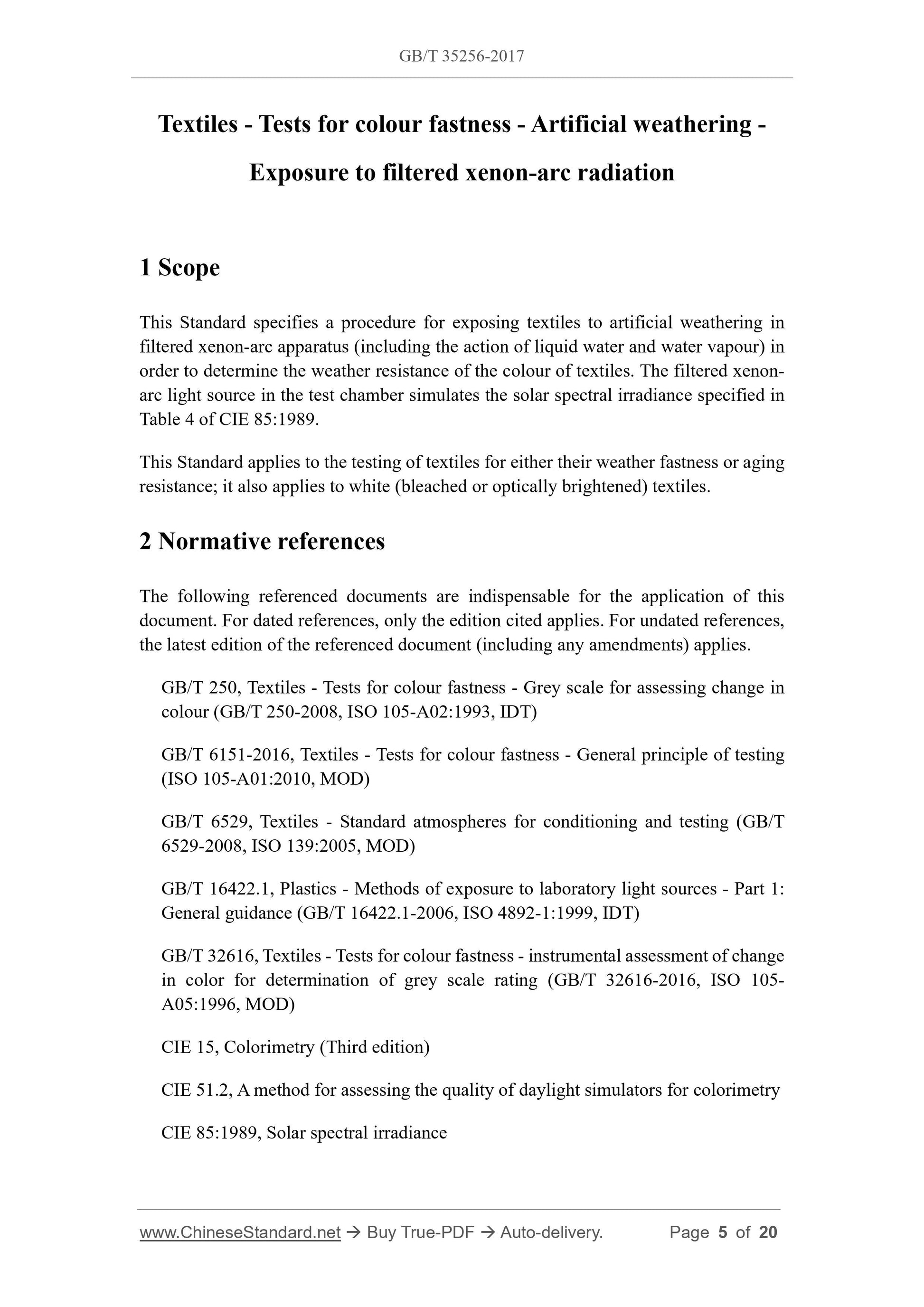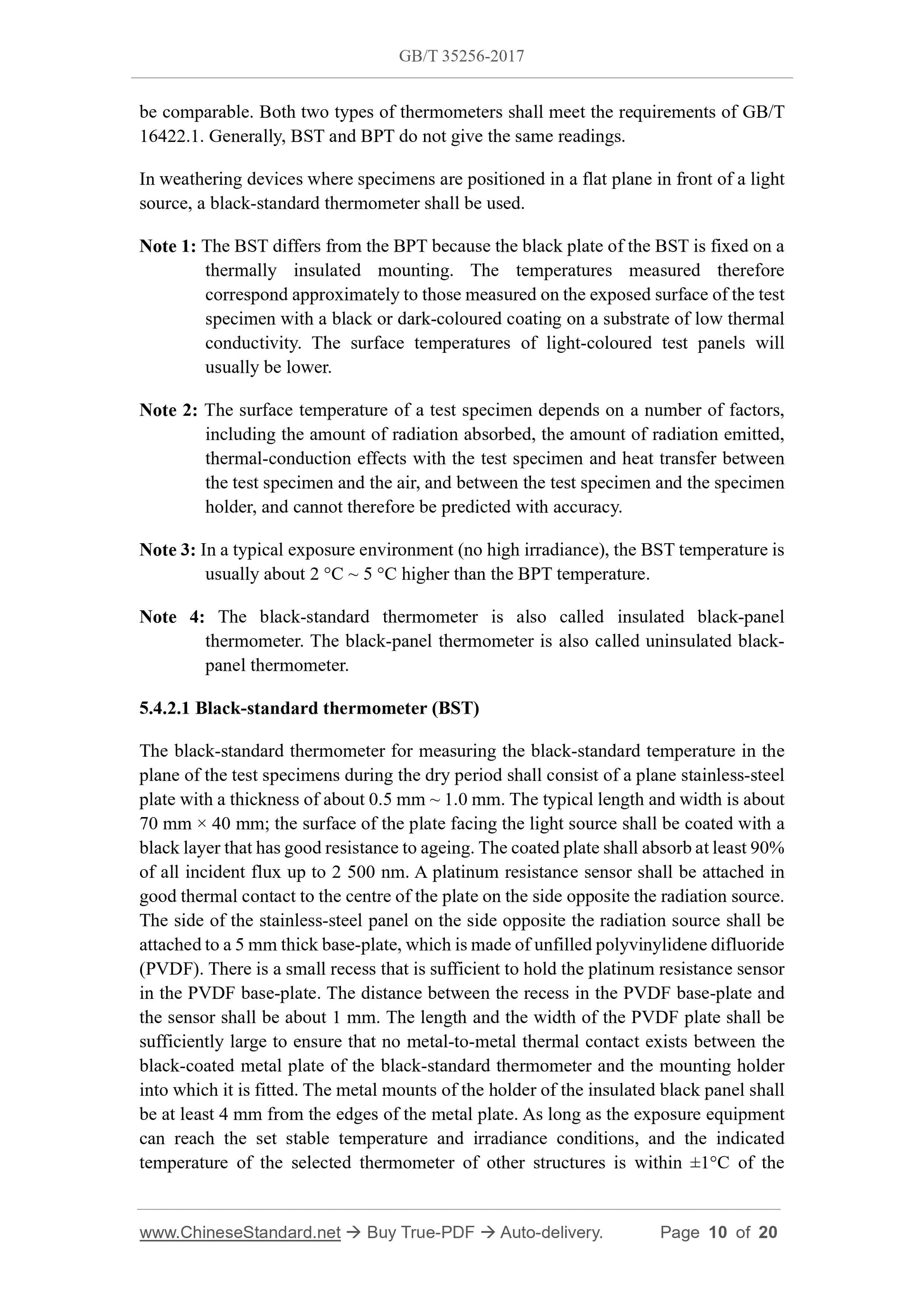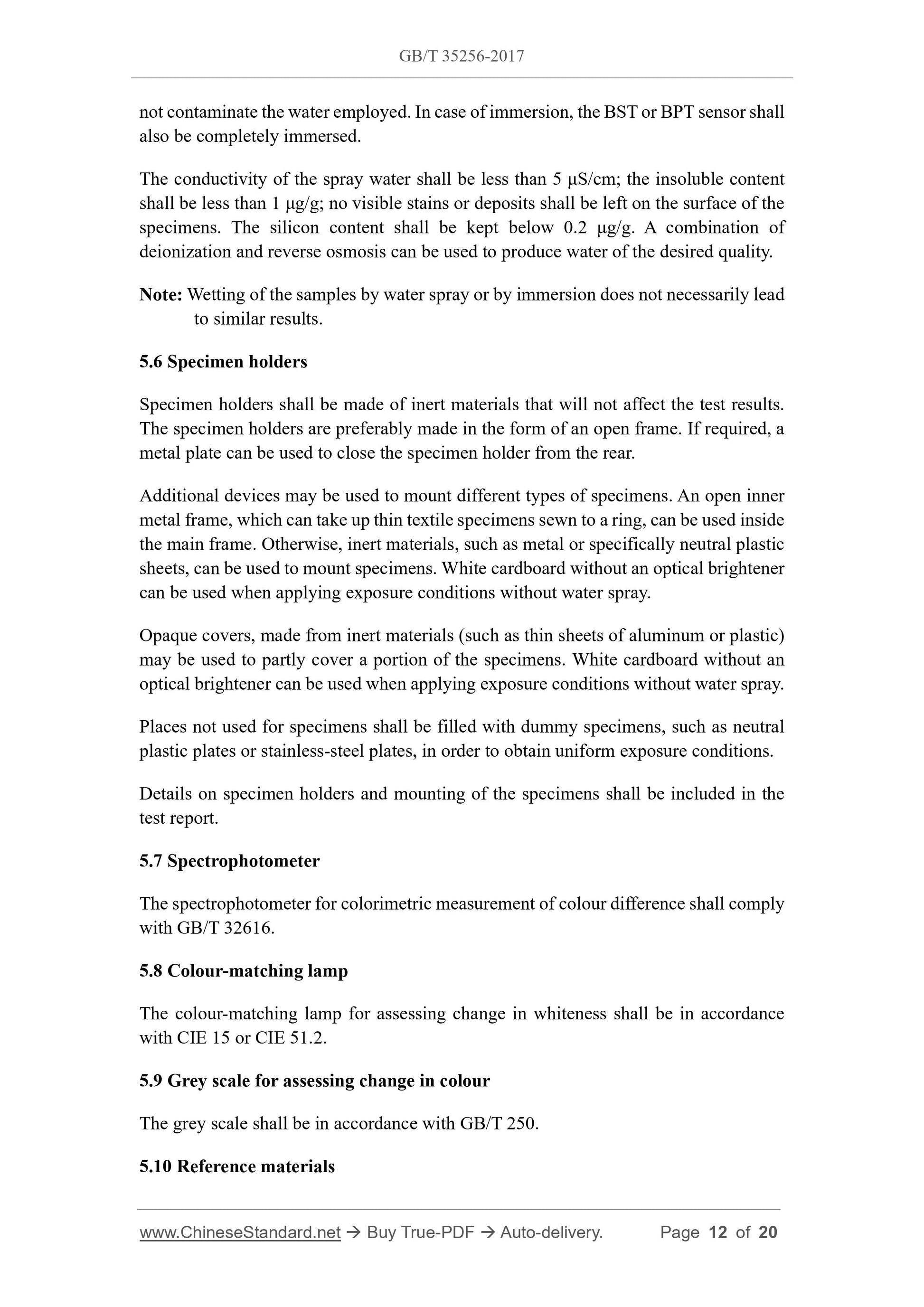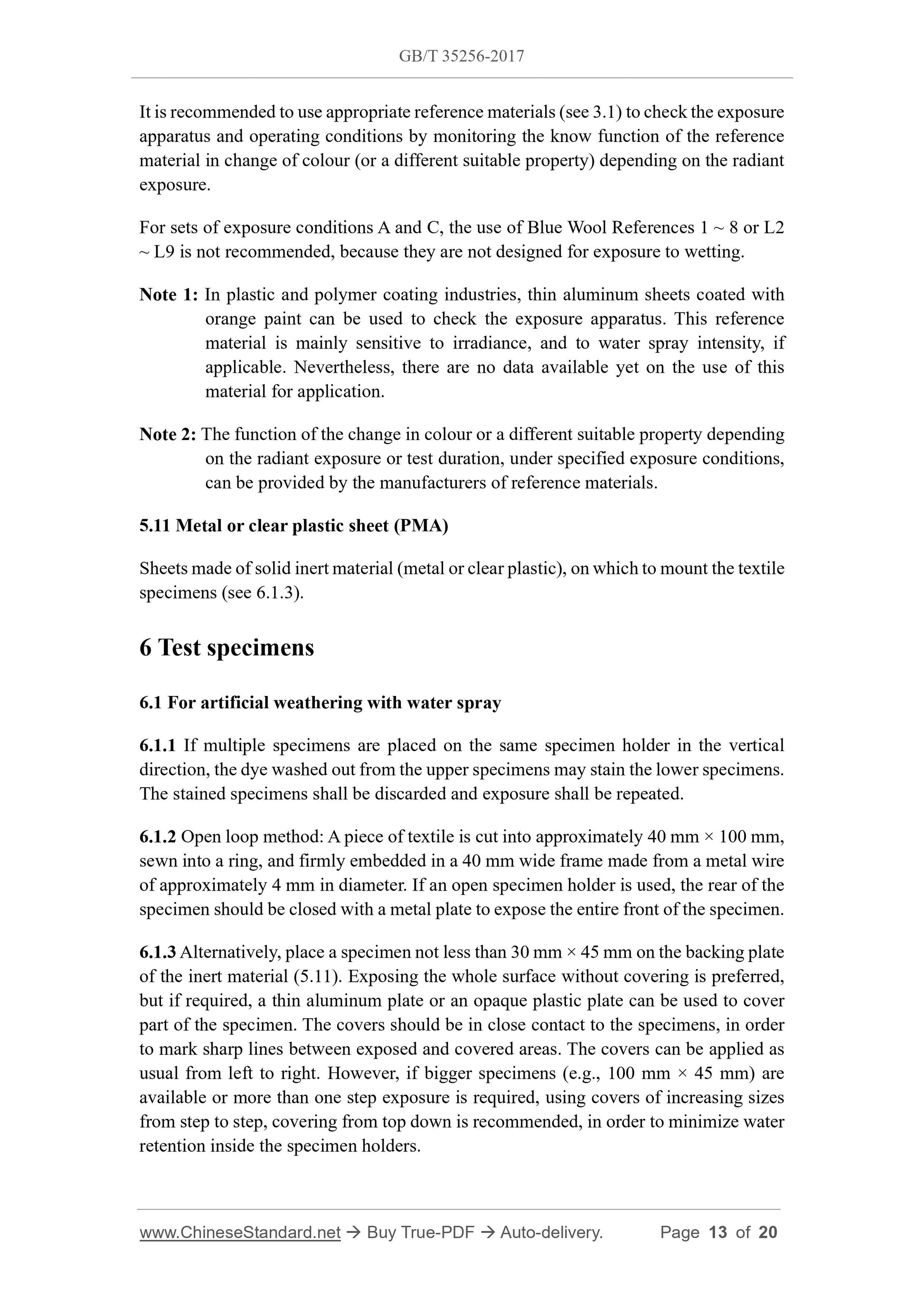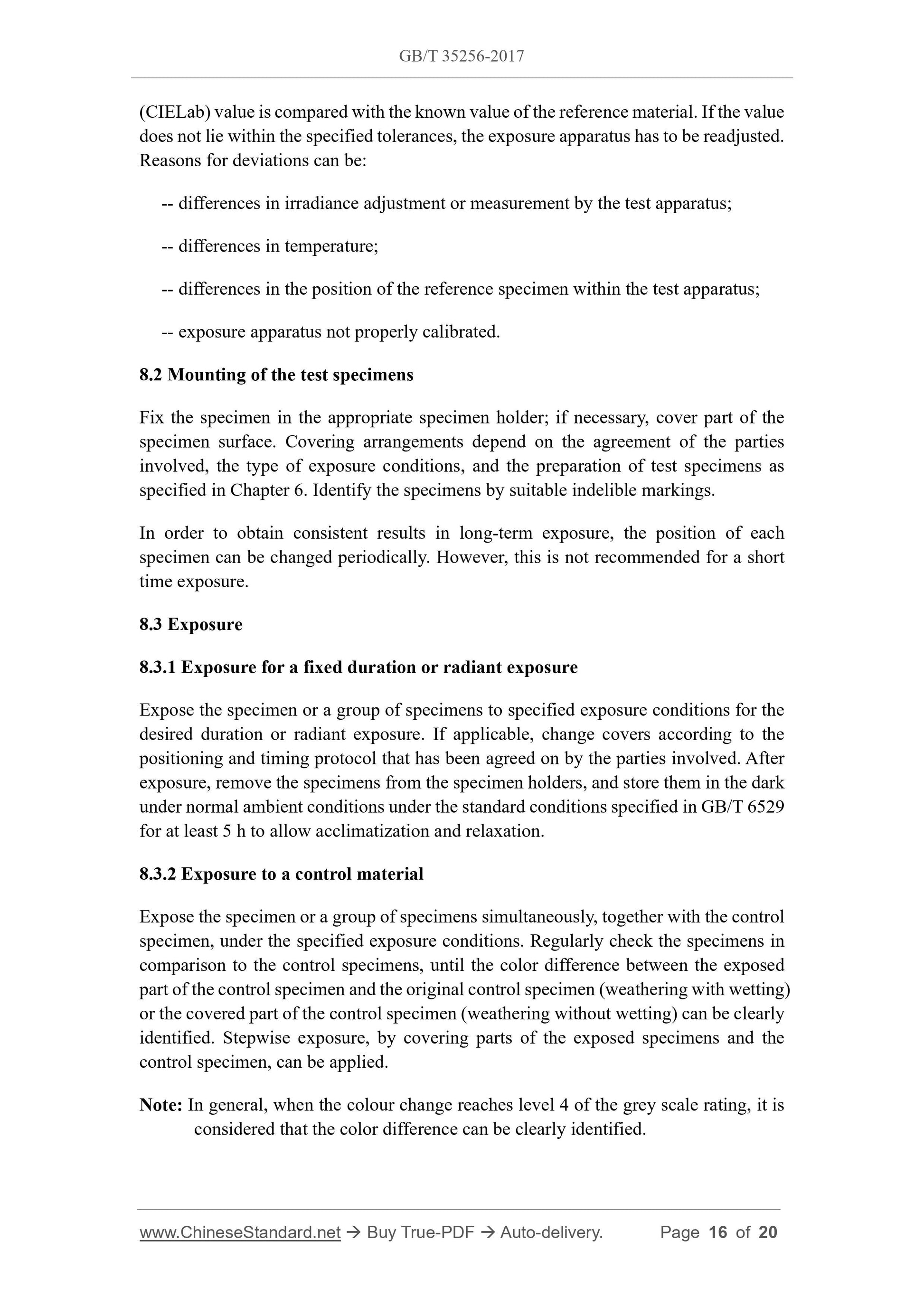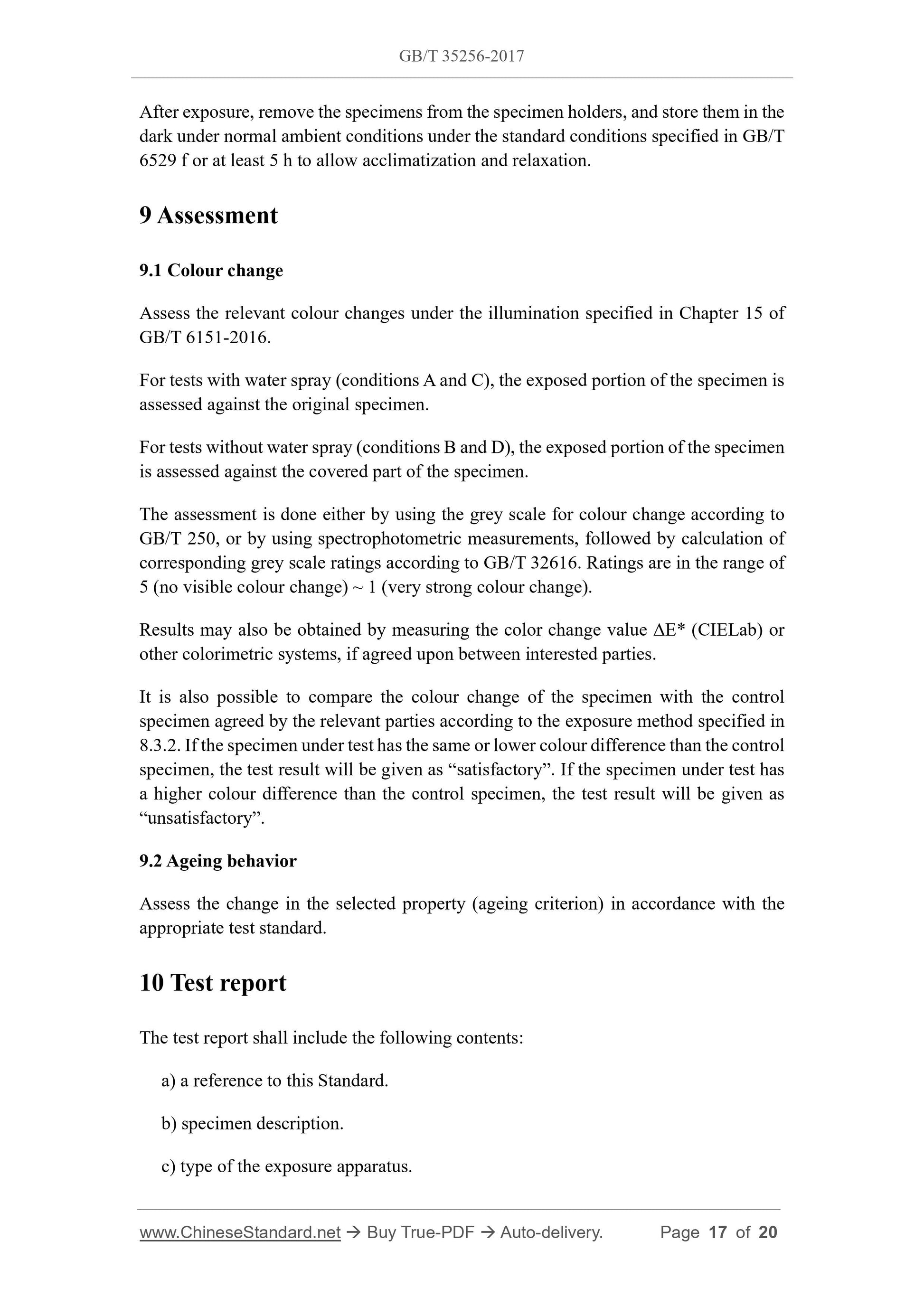1
/
of
8
www.ChineseStandard.us -- Field Test Asia Pte. Ltd.
GB/T 35256-2017 English PDF (GB/T35256-2017)
GB/T 35256-2017 English PDF (GB/T35256-2017)
Regular price
$235.00
Regular price
Sale price
$235.00
Unit price
/
per
Shipping calculated at checkout.
Couldn't load pickup availability
GB/T 35256-2017: Textiles -- Tests for colour fastness -- Artificial weathering -- Exposure to filtered xenon-arc radiation
Delivery: 9 seconds. Download (and Email) true-PDF + Invoice.Get Quotation: Click GB/T 35256-2017 (Self-service in 1-minute)
Newer / historical versions: GB/T 35256-2017
Preview True-PDF
Scope
This Standard specifies a procedure for exposing textiles to artificial weathering infiltered xenon-arc apparatus (including the action of liquid water and water vapour) in
order to determine the weather resistance of the colour of textiles. The filtered xenon-
arc light source in the test chamber simulates the solar spectral irradiance specified in
Table 4 of CIE 85:1989.
This Standard applies to the testing of textiles for either their weather fastness or aging
resistance; it also applies to white (bleached or optically brightened) textiles.
Basic Data
| Standard ID | GB/T 35256-2017 (GB/T35256-2017) |
| Description (Translated English) | Textiles -- Tests for colour fastness -- Artificial weathering -- Exposure to filtered xenon-arc radiation |
| Sector / Industry | National Standard (Recommended) |
| Classification of Chinese Standard | W04 |
| Classification of International Standard | 59.080.01 |
| Word Count Estimation | 14,138 |
| Date of Issue | 2017-12-29 |
| Date of Implementation | 2018-07-01 |
| Regulation (derived from) | National Standards Bulletin 2017 No. 32 |
| Issuing agency(ies) | General Administration of Quality Supervision, Inspection and Quarantine of the People's Republic of China, Standardization Administration of the People's Republic of China |
Share
